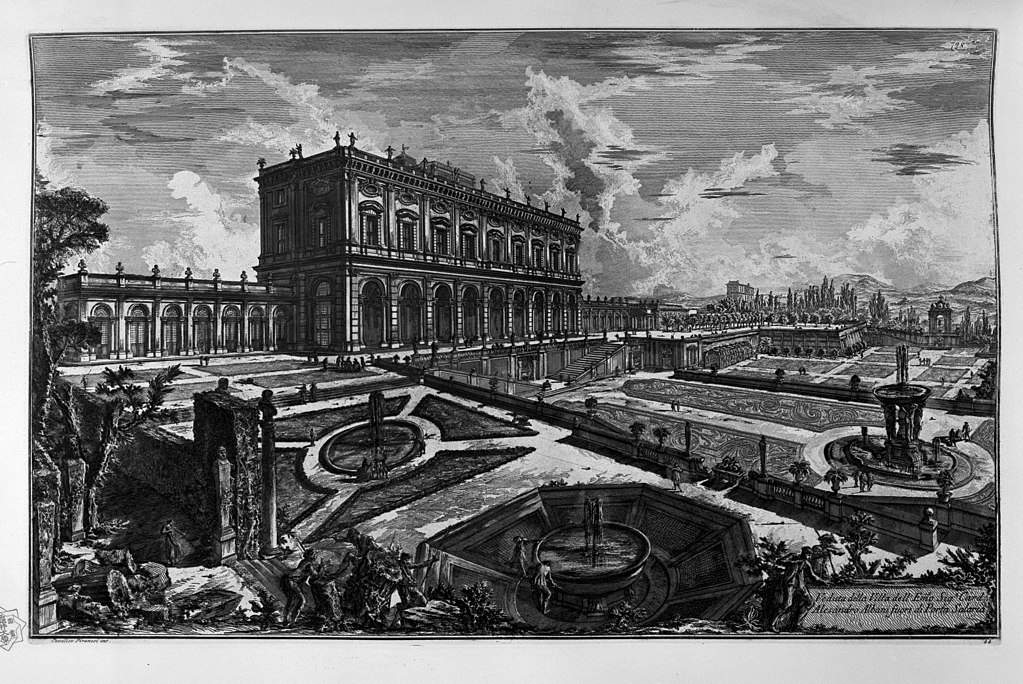Torlonia assets seized: seals on world's largest private collection of antiquities
A massive seizure of assets worth 1.8 billion euros: that’s how much the Torlonia family’s estate amounts to, and that includes the Palazzo Torlonia in Via della Conciliazione, Villa Albani, Villa Delizia Carolina, and an extraordinary collection of works of art, including a collection of more than six hundred Greek and Roman statues (it is the largest private collection of antiquities in the world). The order placing seals on the entire Torlonia estate was ordered by Judge Fulvio Vallillo of the 8th section of the Civil Court of Rome, following developments in the lawsuit opposing the heirs of Alessandro Torlonia, the prince who died last Dec. 28. The dispute involves Carlo Torlonia on the one hand, and his siblings Paola, Francesca and Giulio on the other.
The sequence of events leading to the current situation starts from the last months of Alessandro Torlonia’s life, who appointed Paola’s son, Alessandro Poma Murialdo, as executor. Carlo, the prince’s eldest son, as recounted by Corriere della Sera, claims that the signatures at the bottom of the proxies were allegedly manipulated: thus, he appealed to the civil court, also requesting protection of the estate from divestment and squandering. An investigation for forgery ensued, with a file that, however, to date has no suspects: in the meantime, the civil litigation continued and led to the decision last Wednesday to block the Torlonia estate with a “conservative” seizure. In fact, Carlo Torlonia claims that the family’s assets are, as Corriere still reports, “on the verge of being sold to make cash.” According to Carlo’s statement, the three brothers are allegedly trying to obtain liquidity for the recapitalization of Banca del Fucino, in which they participate. And to do so, again according to Carlo, they would also be in talks with the Getty Museum in Los Angeles to divest part of the 623 marble statues, which, moreover, are bound, and which, as mentioned, constitute the world’s leading private collection of antiquities.
Another article in the Milanese newspaper also reports some of Carlo’s statements: “what emerges very serious,” he wrote, “is that the 623 statues corresponding to the unique collection of statues that are the object of the inheritance and bound by the Archaeological Superintendence seems to have been the subject of a sale negotiation with an agreement between Alexander Poma Murialdo the Paul Getty Museum and the ministry.” And again, Carlo Torlonia himself writes that “a roughly equivalent number of other unbound statues have been found that risk being even more easily the subject of transfer and/or replacement and/or transfer abroad.”
The brothers responded with a note, in which they rejected the hypotheses supported by Carlo: “Carlo Torlonia,” we read, “in his direct statements or through his lawyers, forgets that his legal action risks undermining the actual availability of the works for participation in the Exhibition organized in agreement with the MIBACT at the Capitoline Museums as the first stage and other venues of great prestige, including foreign ones. He also forgets that he is not the owner of Palazzo Torlonia Giraud at all and that he owns only one-sixth of the aforementioned Collection [...]. Paola, Francesca and Giulio Torlonia, together with Alessandro Poma Murialdo, specify that it has never been their intention to use any of the works of art under the management of the Torlonia Foundation to guarantee the assets of Banca del Fucino or for its recapitalization, and the insinuations made in this regard by Carlo Torlonia and his lawyers reported by the press organs do not respond to the truth and are without foundation even from a legal point of view.” As for the relationship with the Getty, Poma Murialdo clarified to Il Messaggero that it was a matter of normal collaborative relationships as with many other institutions (the collection is in fact managed by a Foundation, established in 2014, which also signed an agreement with the Ministry of Cultural Heritage in 2016: the agreement provided for the public display of part of the collection).
Italia Nostra also intervened in the matter, asking the Ministry of Culture to acquire the collection to prevent its dispersion. “The sale of the Torlonia collection,” reads a note, “is a risk that Italy cannot take. The litigiousness of the Torlonia heirs over Alessandro’s will has triggered the seizure of assets worth 2 billion euros. Real estate but also movable assets such as the famous and infamous collection of Greco-Roman statuary ’seized’ by the Torlonia family since the 1970s.” For the association, there is no time to lose: “the Ministry of Cultural Heritage must step in with strength and determination to foil any vague desire to plunder the Italian heritage of the extremely valuable restricted finds and ensure absolute protection of those, possibly unrestricted.”
Pictured: Giovanni Battista Piranesi, View of the Villa Albani from the Views of Rome published in Paris between 1835 and 1839 at Firmin Didot Frères (1748-1774; engraving, 54.4 x 78.7 cm)
 |
| Torlonia assets seized: seals on world's largest private collection of antiquities |
Warning: the translation into English of the original Italian article was created using automatic tools. We undertake to review all articles, but we do not guarantee the total absence of inaccuracies in the translation due to the program. You can find the original by clicking on the ITA button. If you find any mistake,please contact us.





























